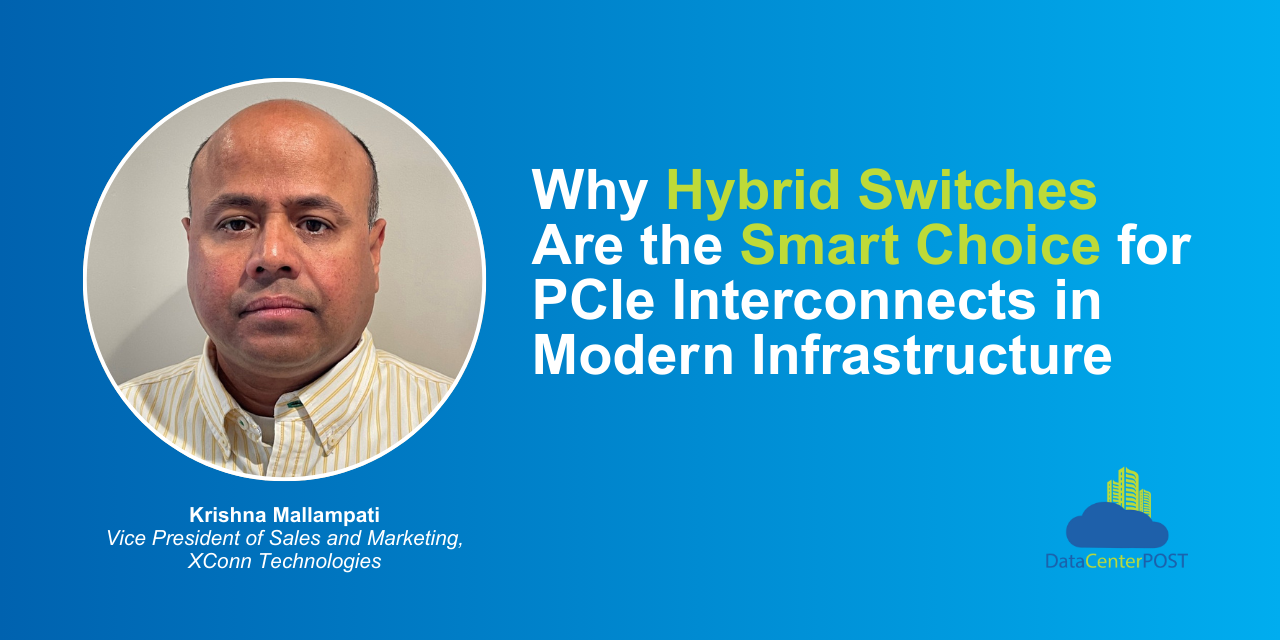As high-performance computing environments continue to scale in complexity and speed, the pressure is on infrastructure architects to design systems that not only meet today’s performance needs but are also ready for tomorrow’s workloads. Whether you’re powering AI model training, real-time analytics, or memory-intensive applications, your choice of interconnect plays a pivotal role. This is where hybrid PCIe switches – those that support both PCIe and Compute Express Link (CXL) – can be a game-changer.
The PCIe Advantage: Doubling Down on Performance
At the heart of modern interconnects lies PCIe Gen 5, a standard that delivers 32 giga transfers per second (GT/s) per lane, doubling the bandwidth of its PCIe 4.0 predecessor. According to Crucial, PCIe Gen 5 SSDs alone can achieve speeds up to 13,000 MB/s, drastically reducing application load times and accelerating large-scale data transfers. For industries relying on heavy I/O (including gaming, media rendering, and cloud storage) this leap in performance translates to better user experiences, faster compute cycles, and improved operational throughput.
But looking ahead, PCIe Gen 6.2 is poised to raise the bar even higher with 64 GT/s per lane and enhanced forward error correction (FEC), enabling higher data integrity without compromising latency. PCIe Gen 6.2 will empower data centers to keep pace with the exponential growth of AI, machine learning, and real-time analytics.
Why Hybrid Switches Matter
While PCIe provides impressive bandwidth and speed, workloads are evolving, and so must infrastructure. Hybrid switches that combine PCIe and CXL support offer several advantages for high-performance and future-ready deployments:
- Future-Proofing with CXL Integration: CXL is quickly gaining traction as a protocol that extends PCIe with added coherency and memory-sharing capabilities, enabling tighter integration between CPUs and accelerators. The latest iteration, CXL 3.1 extends support for advanced memory pooling, fabric-attached devices and dynamic resource sharing across CPUs, GPUs and accelerators. To get the best of both standards, a hybrid PCIe/CXL switch allows you to support today’s PCIe-based devices while paving a seamless path toward CXL-based architectures without costly hardware overhauls.
With CXL 3.1, the interconnect evolves into a full-fledged fabric capable of enabling composable infrastructure—where memory, compute, and storage resources can be dynamically assigned and reconfigured on demand. Investing in a switch that embraces both PCIe Gen 6.2 and CXL 3.1 ensures your infrastructure can scale into the next era of disaggregated computing.
- Scalability for Multi-Device Architectures: Modern workloads often require multi-GPU setups, AI accelerators, and NVMe storage, all of which need robust interconnects. High-lane-count PCIe switches (e.g., with 256+ lanes) enable horizontal scaling without performance degradation. Hybrid switches add value by ensuring that new CXL-enabled devices can also be integrated into the same fabric, offering a scalable, mixed-technology environment.
- Low Latency for Real-Time Applications: Latency is mission-critical in applications like financial systems, healthcare diagnostics, and edge AI. PCIe-based systems already support sub-100ns latency, and with CXL 3.1, latency-sensitive workloads can benefit from coherent memory sharing between devices, enabling even faster decision-making and data throughput.
- Ecosystem Compatibility and Backward Support: PCIe’s backward compatibility remains one of its strongest features. Hybrid switches that support PCIe Gen 5 today and are ready for Gen 6.2 tomorrow ensure seamless integration with legacy PCIe 3.0/4.0 devices. Coupled with CXL 3.1 support, these switches provide a flexible upgrade path that accommodates both existing infrastructure and next-generation hardware, including accelerators and memory expanders.
- Energy Efficiency for Sustainable Computing: Power consumption is a growing concern in high-density data centers. Hybrid switches often include dynamic power management features to balance performance with energy savings. By consolidating PCIe and CXL device communication into a single, efficient fabric, hybrid switches reduce overall infrastructure complexity and associated power draw. This can deliver significant advantages as organizations work to meet sustainability targets.
- Reliability and Resilience for Critical Environments: Uptime is non-negotiable in sectors like healthcare, defense, and finance. Hybrid switches designed for enterprise use often come with redundant paths, ECC memory, and failover mechanisms to keep data moving even during component failures. With CXL’s ability to support memory redundancy and pooling, hybrid switches further strengthen the resilience of mission-critical systems. Even more, with CXL 3.1’s support for fabric-based failover and shared memory resiliency, hybrid interconnects provide added layers of reliability for mission-critical systems.
Designing for What’s Next
Selecting a PCIe switch is no longer just about throughput—it’s about architectural agility, performance scaling, and technology convergence. Hybrid switches that support PCIe Gen 6.2 and CXL 3.1 are the smartest path forward, enabling current performance while laying the groundwork for next-gen, memory-centric computing.
By making the right interconnect decision today, you’ll empower your infrastructure to handle the workloads of tomorrow—whether they’re built on today’s AI accelerators or tomorrow’s composable compute fabrics.
# # #
About the Author
Krishna Mallampati is Vice President of Sales and Marketing at XConn Technologies, an innovation leader in next-generation interconnect technology for the future of high-performance computing and AI applications.


